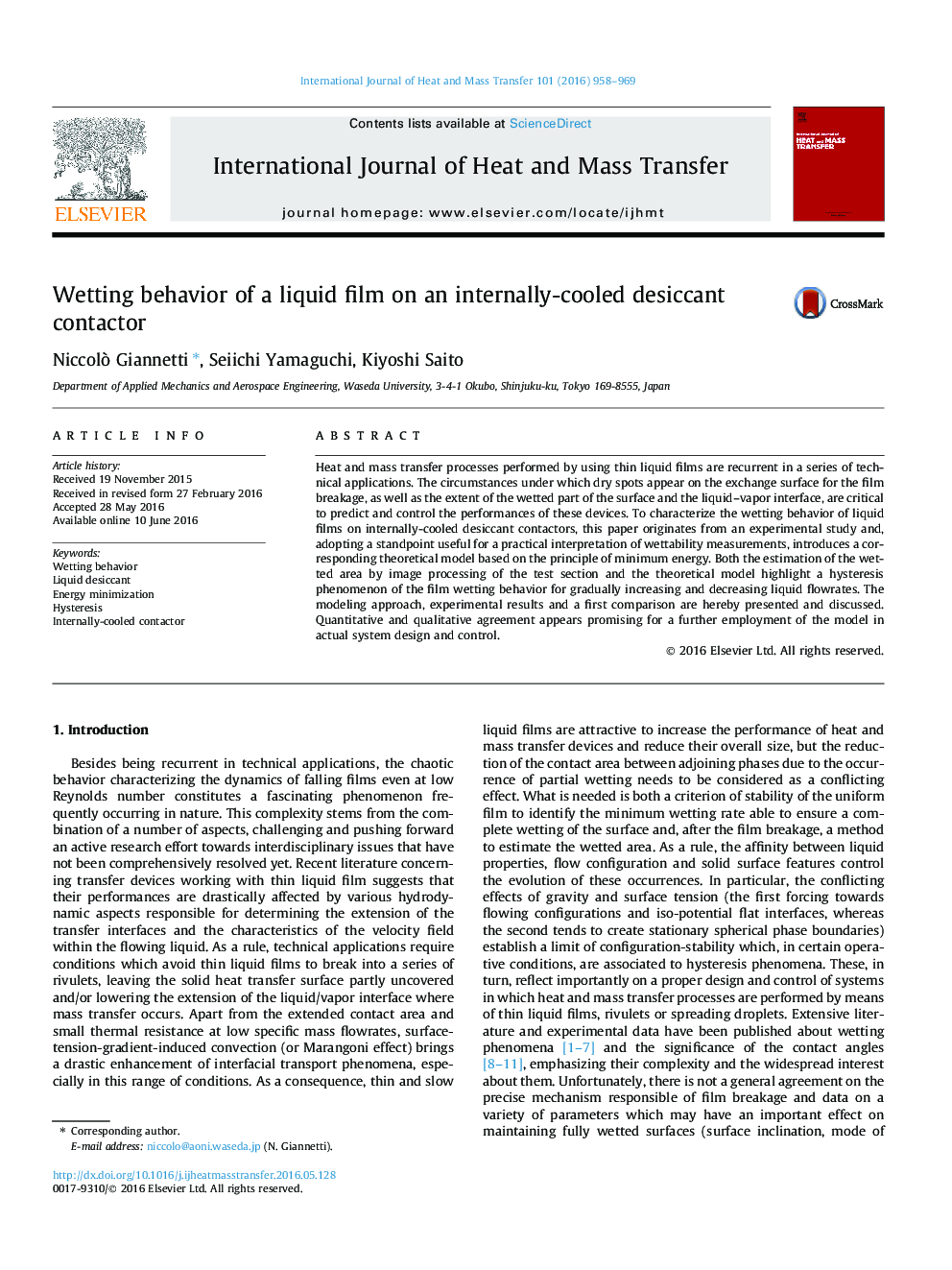| Article ID | Journal | Published Year | Pages | File Type |
|---|---|---|---|---|
| 7055411 | International Journal of Heat and Mass Transfer | 2016 | 12 Pages |
Abstract
Heat and mass transfer processes performed by using thin liquid films are recurrent in a series of technical applications. The circumstances under which dry spots appear on the exchange surface for the film breakage, as well as the extent of the wetted part of the surface and the liquid-vapor interface, are critical to predict and control the performances of these devices. To characterize the wetting behavior of liquid films on internally-cooled desiccant contactors, this paper originates from an experimental study and, adopting a standpoint useful for a practical interpretation of wettability measurements, introduces a corresponding theoretical model based on the principle of minimum energy. Both the estimation of the wetted area by image processing of the test section and the theoretical model highlight a hysteresis phenomenon of the film wetting behavior for gradually increasing and decreasing liquid flowrates. The modeling approach, experimental results and a first comparison are hereby presented and discussed. Quantitative and qualitative agreement appears promising for a further employment of the model in actual system design and control.
Related Topics
Physical Sciences and Engineering
Chemical Engineering
Fluid Flow and Transfer Processes
Authors
Niccolò Giannetti, Seiichi Yamaguchi, Kiyoshi Saito,
